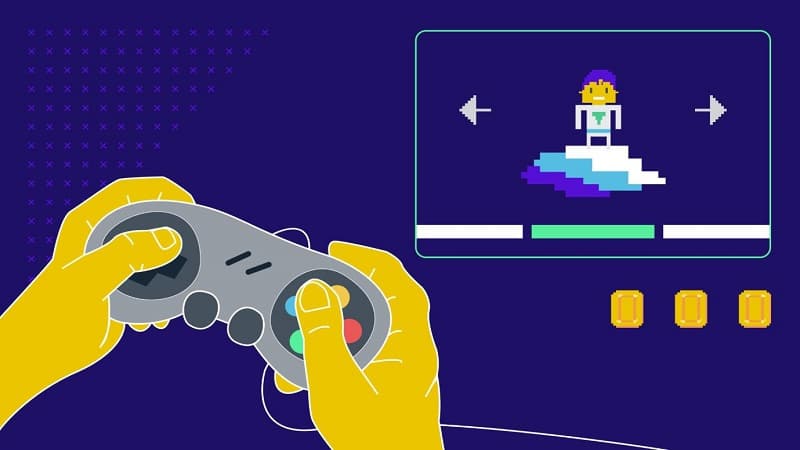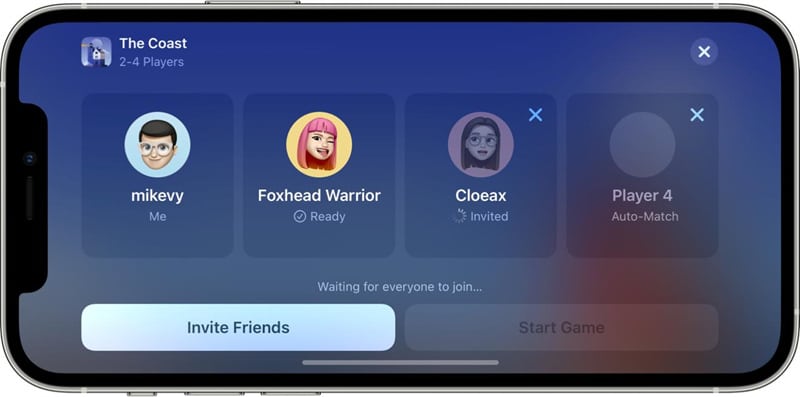
As video games have evolved, so too requires better user interfaces. Games are no longer just a pastime for children; they have become a form of entertainment for people of all ages.
This has led to the development of more complex and sophisticated user interfaces, as game designers strive to create an experience that is both enjoyable and easy to use. In this blog post, we will explore the various types of user interfaces that are used in video games.
What is a User Interface in Games

Before we start looking at different types of the user interface, let's first talk about what exactly a user interface is. At its most basic level, a user interface is simply a set of controls and graphical elements that allow users to interact with an application or game.
But UI developers and UX designers usually take things a step further and design their interfaces to be intuitive, easy to use, and highly functional. This is especially important in the case of video games, where even a slight delay or confusion can lead to frustration and decreased enjoyment for the player.
How do they work
Different types of user interfaces are designed for different purposes. For example, a menu screen might be used to display game settings, while an in-game tutorial or pause button is typically used to help users learn how to play the game.
In general, UI designers and UX designers try to build interactive systems that feel natural and intuitive for players to use.
What are the different types of UI in games?
There are many different types of UI in video games, including menus, tutorials, controls, and more. Some of the most common types include:
1. Menu screens.
These screens often serve as a starting point for players to launch into the game or make changes to their settings. This might include selecting a difficulty level or choosing from different game modes.
2. In-game tutorials, breadcrumbs, and prompts.
Tutorials are designed to provide players with in-game guidance as they learn how to play the game. Breadcrumb navigation allows users to move through a series of steps or screens by clicking on links that point them in the direction they need to go next. And prompts are usually displayed when the game needs users to act, such as by clicking on an icon or entering a set of keystrokes.
3. Controls and menus.
In addition to providing users with in-game guidance, many games also include controls that enable players to interact with the world around them, such as menus where they can equip weapons and armor or change their character's appearance.
4. Status screens, maps, and minimaps.
These tools are often used to provide players with information about their progress, including health status, goal completion, and inventory management. Maps and minimaps are also commonly used to help players navigate complex game environments.
5. HUDs, meters, and gauges.
HUDs (heads-up displays) are typically used to display information about a player's character or the world around them. Meters and gauges are often used to track user progress in a game, such as collecting points or moving through levels.
Overall, user interfaces in video games are becoming more complex and sophisticated, to create a richer and more immersive gaming experience for players. Whether they are used to provide guidance or display information, these interfaces play an important role in helping users navigate games and enjoy them to the fullest.
How can you design effective user interfaces for your players?

There are some key considerations when designing effective user interfaces for video games. Some of the most important include:
- Designing intuitive interfaces that allow players to interact with the game efficiently and naturally. This might involve using consistent layouts, clear labels and feedback, and access controls that can be easily understood by players of all skill levels.
- Considering the needs and preferences of different player demographics, such as age, gender, and cultural background. This can help you better tailor your game interfaces to suit the needs of your target audience, while also improving the overall user experience.
- Implementing feedback mechanisms that provide players with information about their progress or performance within the game. This might include displaying information clearly and concisely, using animations or sound effects to help draw attention to important details, and providing players with tools for customizing their interface settings.
- Incorporating accessibility features that make your interfaces easier for users with disabilities to navigate. This can involve using high-contrast colors or text-to-speech output, for example, to help users see and hear important information in the game.
- Testing and iterating your interfaces to optimize their usability and design. This involves tracking user engagement metrics, such as clicks and button presses, as well as conducting user testing sessions with a representative sample of players to gather feedback about your interfaces. Based on this information, you can then make changes or improvements that help enhance the overall experience for users.
Examples of good and bad user interfaces in games
The examples can be found in many places, including popular games like Fortnite, World of Warcraft, and Candy Crush Saga.
One way to evaluate the usability or effectiveness of a user interface is to consider factors such as ease of use, clarity of information displayed, and level of engagement with players. Ultimately, designing good user interfaces for your video games requires balancing these factors with player preferences, feedback, and other considerations.
For example, Fortnite is a popular shooter game that has gained widespread popularity in recent years. One key strength of the user interface in this game is its intuitive layout and controls, which help players quickly navigate between different menus and options. The interface makes it easy for players to customize their settings, track their progress and stats, and interact with other players in the game.
However, not all user interfaces are created equal. In contrast, some games like Candy Crush Saga have poorly designed interfaces that can be confusing or difficult to use. For example, this game uses a lot of bright colors and animations that may distract players from important information, making it difficult for users to focus on what is happening in the game.
In addition, there is little feedback provided to players about their performance or progress, which can lead to frustration and decreased engagement with the game.
Final thoughts
Overall, designing effective user interfaces for video games requires careful consideration of a range of factors, including usability, clarity, player preferences, and feedback.
By paying attention to these considerations and testing your interface designs with real users, you can improve the overall experience for players and help ensure that your game is successful.










